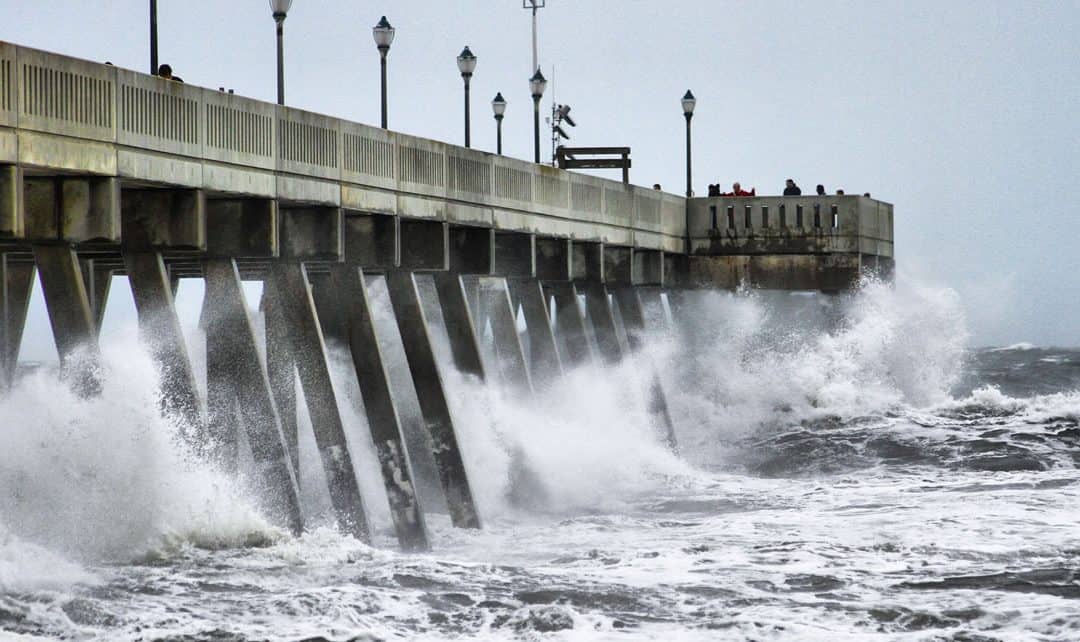The National Association of Realtors (NAR) chose the perfect location for its recent invitation-only Sustainability Summit 2019 – New Orleans. Presentations included powerful insights and calls to action from The Union of Concerned Scientists, flood and hazard experts from regional and local government and leading real estate practitioners from across the continent.
The two-day working session aimed to provide leadership strategies on topics of sustainability that benefit Realtor associations and communities. The vision for the committee was clear: Realtors thrive in a culture of sustainability that promotes viability, resilience, adaptability and resource efficiency. The goal: to provide NAR with a recommendation for addressing climate change, avoiding potential liability related to emerging risk and representation, and to leverage the Realtor/homeowner relationship to meet oncoming challenges.
Craig Foley, chief sustainability officer at LAER Realty Partners and chair, NAR Sustainability Advisory Group opened with a review of NAR foundational ethics and policy. Foundational within the 1970 charter update that Foley references is a commitment to protecting the environment. The quote read like a Rachel Carson’s Silent Spring and clearly outlines an organizational mandate at NAR to be good stewards of the land.
Erika Spanger-Siegfried from the Union of Concerned Scientists (UCS) lead with an introduction to two key studies: When Sea Rise Hits Home and Killer Heat in the United States. Her presentation showed clear scientific arguments for the impact to property from changing weather and sea-rise. She touched on changing conditions for insurability and loss of migrating population as potential for erosion of the tax base. Most alarming was her discussion of “off the chart” heat and humidity levels that are emerging. Not only is it hotter, but we don’t even have the means to measure some of the emerging heat and its impact on people.
UCS insights about heat are reflected in the Urban Land Institute’s recent release of Scorched, which offer a few hopeful perspectives. “Widespread adoption of temperature reduction strategies (mitigation) could potentially reduce or even offset the urban warming trends currently occurring in cities,” it says. These strategies include integrated water retention and management strategies to reduce flood and drought impacts, and frequently include growing green infrastructure including native species trees, green roofs and bioswales. For locations like Toronto, this focusses the importance of strong investment in municipal and site level resilience as a means of protecting property owners from risk.
Whether valuing a property with high performance and resilient features, or those in a walkable neighbourhood with treelined streets, the discussion at the summit made a clear connection to the role of the Realtor in communicating the value of energy efficiency and climate risk.
“You can open up the newspaper every day and see an alarming trend,” said Vince Malta, president elect of NAR. “It’s important we are at the table in meeting the challenges of the changing climate in the coming years.”
In an interview, Malta strongly underscored that the summit was a forum to create an action plan for the NAR leadership team. Malta, the CEO and broker at Malta & Co. in San Francisco said, “As an individual I would want to know how this is going to affect my children and my community, and what is expected of me. Right now, those answers are not really there.”
Lindene E. Patton, a lawyer and partner at Earth and Water Law in Washington, D.C. suggested that a real estate climate-risk index could be referenced to the Actuaries Climate Index as a means of connecting meaningful homeowner-relatable information with insurability connected actuarial sciences. Patton, who is a globally recognized expert in risk and resilience and related economic impacts, directed participants to converge on strong simple language that would allow NAR leadership to act toward a more positive 2030.
In the end, after two days of inspiring talks and deliberate discussion, a recommendation was made to NAR leadership to create a 2030 climate change action plan. The association has more than one million members across the United States. One delegate, Kerri Hartnett, principal broker at Hartnett Homes in Portland Ore., offered an aspirational idea: “Imagine the power that every Realtor in America can have by helping property owners in every market to bring sustainability and resilience to their communities.”
NAR is a powerful change-making organization that could accelerate the agility of markets to respond to emerging climate-risk, while preserving the wealth of Americans in every community.

Chris Chopik is an influential housing industry innovator and a respected authority working at the intersection of housing, energy, resiliency and natural hazards. Chopik’s work includes an extensive exploration of the future of “Property Value in an Era of Climate Change” (2019) where he examines the financial impact of natural hazards on property values across North America. He holds a Master of Design, Strategic Foresight and Innovation from OCAD University.


















